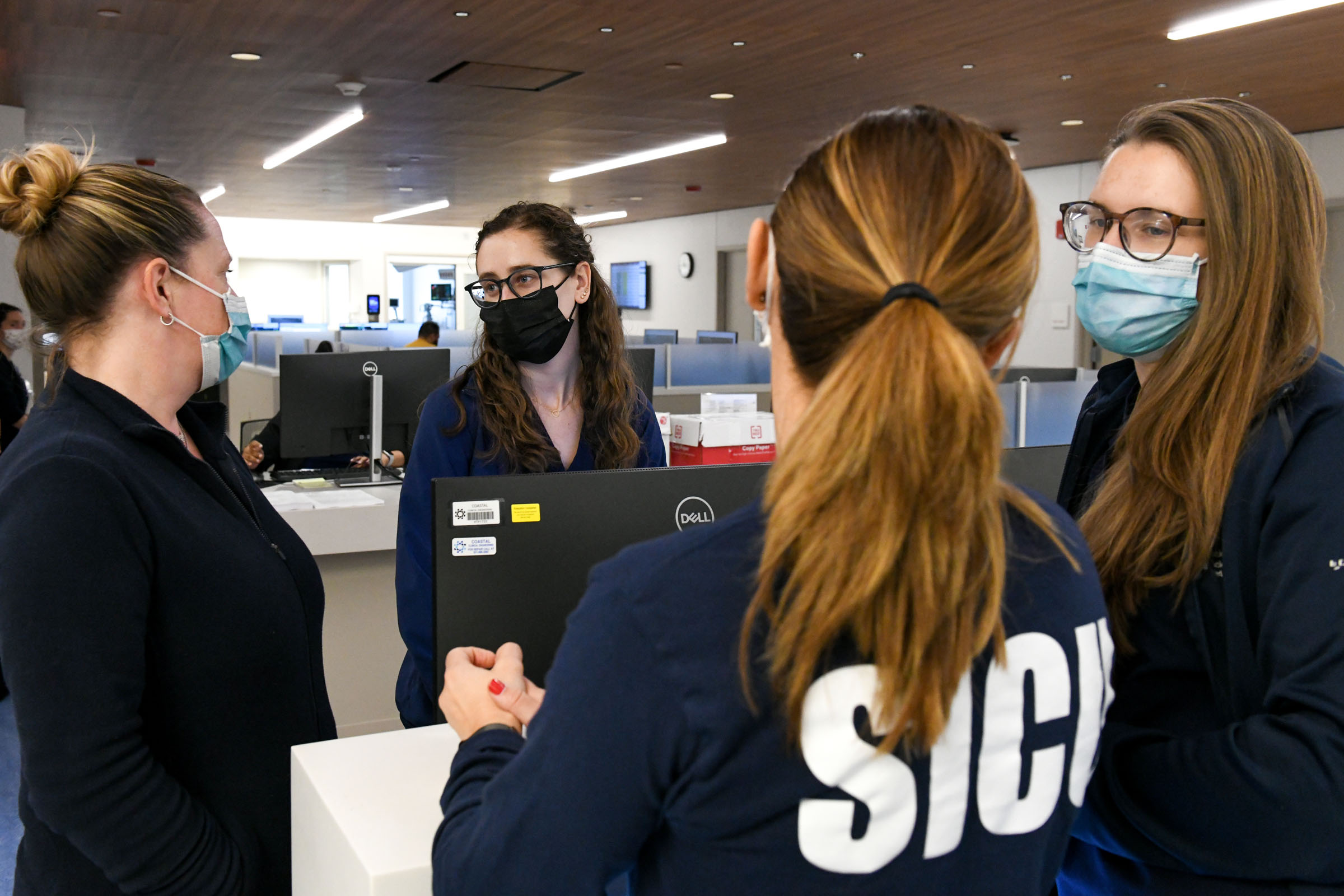HACKENSACK MERIDIAN HEALTH CELEBRATES A MARQUEE MILESTONE: THE OPENING OF THE HELENA THEURER PAVILION, A WORLD-CLASS, STATE-OF-THE-ART SMART SURGICAL AND INTENSIVE CARE TOWER, THE FIRST OF ITS KIND IN THE STATE
BY AMANDA MCCOY PHOTOS BY JONATHAN HILLYER
Ten years ago, Mark Sparta, FACHE, now the president of Hackensack University Medical Center, and the leaders of HUMC embarked on an extensive, multi-year master facility plan. At the time, the hospital was primed for growth (four years later, HUMC would become the academic flagship campus in the newly minted Hackensack Meridian Health network), and the leaders’ objective was to assess the current campus and age of its facilities, and to anticipate the evolving health needs of the New Jersey population. While Sparta described the caliber of HUMC’s physicians as excellent, the hospital’s current OR platform was approaching 30 years of age, and the leaders determined that in order to offer world-class care, they would need a world-class facility.

“One thing I can tell you about HUMC is, from the first day I walked in the door as an intern 35 years ago, this hospital has been fully focused on quality, safety, and patient-centered care, long before these principles hit the national agenda,” noted Sparta, who began his career with HUMC in 1988 as an intern in physical therapy. “It’s a journey; there’s no final destination. This principle was our guidepost for the entire design and ethos of the Helena Theurer Pavilion.”

Throughout the planning stages, the facility that would one day become the Helena Theurer Pavilion underwent several iterations. Sparta noted it was a meticulous, collaborative process. It took two years and input from several players to finalize the first blueprint, but after the HMH network formed in 2016 initially consisting of 13 hospitals but quickly expanding to 18 the leaders realized the outlined facility wouldn’t be large enough to accommodate the complex tertiary and quaternary volume from all campuses. “Over the next 18 months, the plan expanded,” noted Sparta. “The pavilion grew from 16 ORs to 24, and from 340,000 square feet to 530,000. We solidified those plans in 2018, then broke ground in September the following year.”

In December 2022, the pavilion was ready to accept its first patient. In addition to 24 ORs, the nine-story, fully integrated smart hospital features 72 post-anesthesia care unit beds, 50 intensive care unit beds, and 175 medical/surgical beds. A sweeping range of surgical specialties are offered on site, including bariatric, cardiothoracic, colorectal, neurosurgery, orthopedics, robotics, organ transplantation, urology, and general surgery. According to Sparta, every detail, from in-room amenities and operating room tech to transportation corridors and staff work areas, was thoughtfully curated to enhance the experience for each person who walks in the door: patients, physicians, visitors, nurses, and hospital employees alike.
 All rooms in the patient tower are fully private and equipped with a suite of top-end amenities. Bedside tablets, for example, give patients control of the lights, shades, TV, and temperature. Large 55-inch TVs were integrated into each room not only for entertainment, but to eliminate the need for dry erase boards. The monitors now contain important information such as directions for ordering in meals along with the name of their current shift nurse. Cameras are mounted to the top of the screen so patients can video chat with family members at any time, whether they live nearby or 3,000 miles away
All rooms in the patient tower are fully private and equipped with a suite of top-end amenities. Bedside tablets, for example, give patients control of the lights, shades, TV, and temperature. Large 55-inch TVs were integrated into each room not only for entertainment, but to eliminate the need for dry erase boards. The monitors now contain important information such as directions for ordering in meals along with the name of their current shift nurse. Cameras are mounted to the top of the screen so patients can video chat with family members at any time, whether they live nearby or 3,000 miles away
“There was an opportunity for us to create a better patient experience,” said Sparta. “The rooms are larger and equipped with a pull-out bed, so family members can spend the night if they wish to. We were very deliberate with the design of the building to provide all patient rooms with natural light and breathtaking views of NYC to the east, the Palisades to the north, and New Jersey to the south.”

Patient privacy and dignity are corner – stones of the design, and the pavilion features three different connections to the main hospital: one for service, one for the public, and the other for patients. “We’ve all been in hospitals and seen patients in their darkest days being transported down the hallway, sometimes not even aware of where they are because of their condition,” said Sparta. “It’s not a great experience for the patient or the visitor. By implementing a private patient thoroughfare, we are helping them keep their dignity.”
Each of the 24 ORs spread out over two floors is equipped with the latest in technological innovation. Sparta said input from physicians was key during the design phase, and early in the process the leaders built a mock operating room and invited surgeons and nurses from different specialties to inspect and provide feedback. Today, the operating rooms feature large monitors for better visuals during surgery along with a new hyper-advanced LED lighting system that eliminates glare and provides physicians with exceptional depth perception during surgery. Six of the ORs are specially equipped with robotics to accommodate the significant number of robotic assisted procedures performed in the pavilion. There are five da Vinci multi-port robots, four orthopedic robots for joint replacement procedures, one da Vinci single-port robot, and one intraoperative MRI system on site. “We have more robots in this location than some entire European countries,” added Sparta

The pavilion is also a teaching facility, and in addition to hosting in-person, hands-on training workshops, the operating rooms are equipped with camera systems to live-stream surgeries for healthcare practitioners around the world.
Sparta explained the team also poured great thought into the employee areas, from bright, café-style break rooms to dedicated work units that foster collaboration and communication. “We were at the epicenter of the COVID pandemic, and we appreciate what our team went through during the darkest days of the pandemic. It was important to provide them with a facility they would be proud of, a place where they could relax and collect themselves. We created these spacious, comfortable café-style break rooms that take advantage of the extraordinary views. We knew we wanted to provide our world-class team members with a world-class facility so they can deliver world-class care for members of our community today and 100 years from now.”
